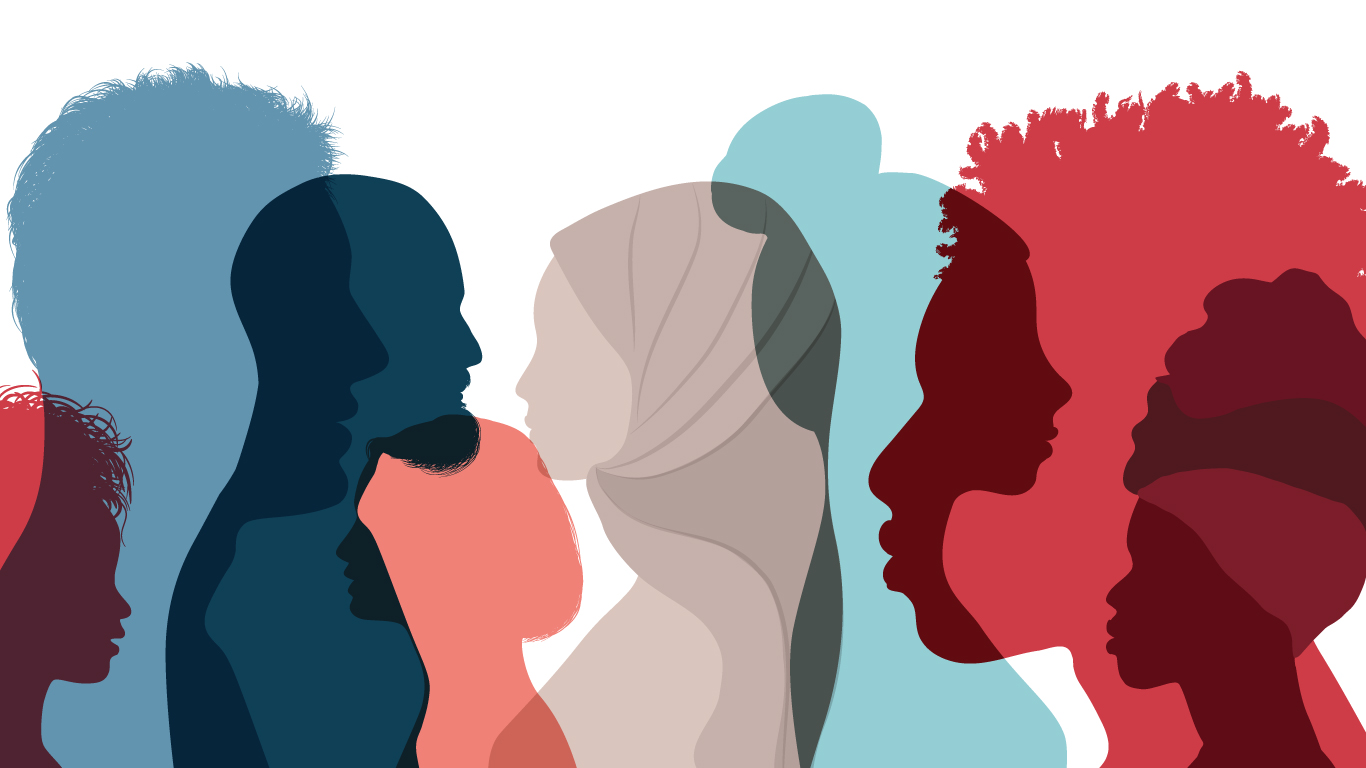
Canada is known for its ethnocultural and religious diversity, a value which is largely shared among the population. In fact, according to the 2020 General Social Survey - Social Identity, 92.0% of the population aged 15 years and older agreed that ethnic or cultural diversity is a Canadian value. There are various questions in the Census of Population and in Statistics Canada’s social surveys to measure the ethnocultural diversity of the population. For example, a question on ethnic and cultural origins includes over 500 response categories, a question on religious affiliation has over 200 response categories, and a question on place of birth, also over 200 response categories. Other relevant data include different variables on immigration, as well as various language variables, such as mother tongue and languages spoken at home, which includes over 450 languages.
While these data are very detailed and provide information on a large number of categories, another question was included in the Census to provide information on a smaller set of population groups to derive counts for the visible minority population. Information on visible minorities was first collected to apply the provisions of the Employment Equity Act (EEA), which defined visible minorities as "persons, other than Aboriginal peoples, who are non-Caucasian in race or non-white in colour."
To fulfill the mandate of the EEA, Statistics Canada provides benchmarking data through the national census. Groups designated as visible minorities were identified in 1987 by the Employment Equity Technical Reference Papers, published by Employment and Immigration Canada, and include, among others, South Asian, Chinese, Black, Filipino, Arab, Latin American, Southeast Asian, West Asian, Korean and Japanese. In 2021, these groups constituted just over one-quarter (26.3%) of the Canadian population. The three largest groups were South Asian (7.1%), Chinese (4.7%) and Black (4.3%).
Canadian society has evolved since the 1980s, and so have data needs. While data on visible minorities are collected to support the EEA, these data are also relevant for developing policies to fight racism and discrimination and to provide equal opportunities for all. These data are currently used by governments, businesses, communities, health care providers, researchers and various organizations across the country.
In recent years, Statistics Canada has received feedback on the use of the term "visible minorities" when disseminating data, and various stakeholders are calling on the agency to retire this term. A commonly proposed alternative is the term "racialized groups." There is also growing demand for more detailed data on the groups currently designated as “visible minorities” to highlight the diversity of these populations. In other words, policy and program development increasingly requires information on the different groups that make up the visible minority population, instead of the population as a whole.
Developing standards through consultative engagements
Statistics Canada has committed to consulting partners, stakeholders and the general public to establish suitable terminology to describe the population, to review the categories to reflect its increasing diversity, and to offer adequate and flexible ways to present the data for a wide range of purposes.
Over the past several years, there has been a continuous effort to interact with data users on ethnocultural data, involving discussions with government and community stakeholders.
To refine the focus on the visible minority standard and broaden the discourse to include a diverse array of stakeholders, Statistics Canada initiated a consultative engagement on the visible minority concept in October 2022. The aim of this consultation was to solicit input from a wide spectrum of participants, including the general public, regarding the visible minority data standard.
Early findings of this consultative engagement were shared in November 2023. The final report is now available, and it includes a number of recommendations on how to collect, disseminate and analyze data on visible minorities/racialized groups.
Standards: what are they for?
National statistical standards are sets of rules used to standardize the way questions are asked to people during data collection and the way statistics are disseminated. By ensuring that information about a given topic is gathered and communicated in the same way every time, standards improve comparability of data over time, facilitate data sharing and ensure quality statistical information.
Statistics Canada, as the national statistical agency, plays a leading role in ensuring that robust statistical standards are available and adopted as part of the national statistical system. These statistical standards are developed through rigorous testing and in consultations with a wide range of experts as well as members of the public. In each case, standards are meticulously crafted to make sure that they capture the right information using a terminology that is recognized by people living in Canada.
Next steps
The public consultations on the visible minority concept are only one of the activities that will contribute to the development and updating of the ethnocultural data collected and disseminated by Statistics Canada. In addition to the public consultations, Statistics Canada regularly meets with an advisory committee composed of leading researchers and academics to discuss its data programs. Ongoing conversations with various stakeholders also inform the development and updating of the visible minority data standard.
Furthermore, Statistics Canada is currently conducting the 2024 Census Test, which will provide quantitative support for the final recommendations for the 2026 Census. Modifying the question is only one step in the process of modernizing the data standard. Changes to the method used to derive the data, including processing multiple responses, combining response categories when relevant, and combining different variables to obtain more disaggregated data, will be investigated in preparation of disseminating the data from the 2026 Census.

StatsCAN app
Did you know you can read StatsCAN Plus articles and more on the StatsCAN app? If you’re already using the app, let us know what you think by leaving a review in the App Store and Google Play.
Contact information
For more information, contact the Statistical Information Service (toll-free 1-800-263-1136; 514-283-8300; infostats@statcan.gc.ca) or Media Relations (statcan.mediahotline-ligneinfomedias.statcan@statcan.gc.ca).
